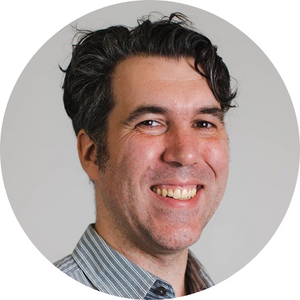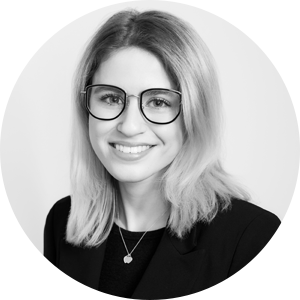How to invest in ETFs
The easiest way to invest in ETFs is to open a discount brokerage account, contribute to it by adding new funds or transferring existing investments, and then purchase your desired ETF(s) just like you would buy a stock.
Do your research on discount brokerages and find one that works best for your situation. I started off investing at TD Direct Investing simply because I did my everyday banking at TD, but today I’d recommend starting with Questrade – Canada’s low-cost discount broker and our top pick for self-directed investors. You get free ETF purchases at Questrade, which is ideal for new investors who are contributing regularly to their investment portfolio. In order to get you started on trading quickly, Questrade offers an Instant Deposit feature which allows you to immediately transfer up to $3,500 into your account.
Start investing in ETFs with Questrade
How to buy and sell ETFs
I find a lot of articles talk about how to open a self-directed account, and how to fund the account, and maybe even share which ETFs to buy. But there’s not a lot said about how to place and execute a trade – how exactly to buy and sell ETFs.
In this example, I’m going to assume you have your brokerage account set up and funded, and now you’re looking to place your first trade. Here’s how to do it:
Note: I’m using my Questrade account in this example, but other discount brokerages offer a similar experience.
First, determine which ETF you’re going to buy. I’m going to use Vanguard’s All Equity ETF – VEQT.
Click on the highlighted link and you’ll see a bunch of market data for that ETF. What we’re looking for is the ‘bid’ and ‘ask’ prices. The bid price is the highest price that traders are willing to pay for this security, while the ask price is the lowest price that traders are willing to accept.
In this example, VEQT has a ‘bid’ price of $28.21 and an ‘ask’ price of $28.25. This is the approximate price range you can expect to pay when you purchase the ETF.
Next, you need to know how much money you want to invest in the ETF and make sure you have enough cash in your account to facilitate the trade.
Let’s say you want to invest $5,000. You expect to pay $28.25 per share for VEQT. Simply divide $5,000 by $28.25 to determine how many shares you can afford to buy. In this case it’s 176.99 – which means you can’t quite afford 177 shares, so you’ll attempt to buy 176 shares.
I’ll pause here to remind investors to also factor in any commissions or transaction costs into their calculation. Most big bank brokerages charge $9.99 per trade, so you’d subtract that amount from your initial $5,000 and then divide $4,990.01 by $28.25 (still 176 shares, in this case).
Now it’s time to place your trade. We’re going to click the Buy/Sell button and open the Order Entry screen.
- Quantity: 176
- Order Type: (Market or Limit – more on this later in the article)
- Limit price: $28.25 (the ‘ask’ price, which is the lowest price traders are willing to accept)
- Duration: Day (your order is good for the trading day)
Click the ‘Buy’ button and you’ll receive an order confirmation giving you one more chance to look over your trade. If everything looks good, click “Send Order” and you’ll put through your trade request. Orders should be filled immediately, assuming the price is accepted.
Why invest in an ETF?
ETFs are a great way for self-directed investors to build their own diversified portfolio and save an enormous amount of money on fees.
Rather than paying fees of 2% or more for mutual funds, or trying to pick winning stocks, investors can use low cost, passive index ETFs to invest in hundreds if not thousands of individual stocks and bonds. This gives investors instant diversification without having to manage all of those individual holdings on their own.
How to choose the best ETF for you
A good rule of thumb for any investor is to keep their costs low, diversify broadly across the entire globe, and to simplify their portfolio whenever possible. It also helps to know the best ETFs your money should go towards.
For most beginners, that means choosing an all-in-one asset allocation ETF that best suits your risk tolerance and time horizon.
I waited to start investing in ETFs until the product landscape evolved enough to allow me to meet those goals (low cost, globally diversified, simple).
So, when the All World, ex Canada ETFs came out I knew it was time for me to invest in ETFs. I bought a Canadian equity ETF (Vanguard’s VCN) and a global equity ETF (Vanguard’s All World ex Canada VXC). Later, when asset allocation ETFs were introduced, I switched to VEQT.
It’s okay to adopt a new ETF strategy as the product landscape evolves and as your personal situation changes. Stick to that rule of thumb and you’ll find an ETF portfolio that works for you.
When not to invest in an ETF
Two caveats to that advice. One, if you invest at a discount brokerage that charges $9.95 per trade, and you’re investing frequently with every paycheque, those fees are going to add up in a hurry. You’re better off switching to index mutual funds, like TD’s e-Series funds, or switching to a commission-free discount broker like Questrade or Wealthsimple Trade.
Invest in ETFs with Wealthsimple
Two, if you’re intimidated by the idea of opening your own self-directed account and buying ETFs yourself, then consider a robo advisor to do it for you. You’ll still get the benefit of investing in a low cost, globally diversified portfolio of ETFs, but the robo advisor will automatically invest, monitor, and rebalance your funds so you don’t have to worry about it.
ETF don’ts
I’ve mentioned the dos already in this article: stick to low cost, passively managed, broadly diversified ETFs with an emphasis on keeping your portfolio simple. Time to mention some don’ts:
Don’t hold overlapping ETFs. We’re all familiar with the idea of not putting all your eggs in one basket. But when it comes to ETFs, one basket is often enough. Still, I’ve seen many portfolios containing two or more ETFs that track the exact same index or country. It’s not necessary.
Don’t use market orders. When you buy an ETF, your broker will ask if you want to use a market order or a limit order. A market order will fulfill your purchase at the best available price, while with a limit order, similar to what you can do at Questrade, you can choose the highest price you’re willing to pay and the order will only complete if and when the market price is at or below your limit.
Don’t trade after-hours. North American stock markets are open from 9:30am – 4:00pm ET, Monday to Friday. Make sure you do your trading during market hours when you’ll get the most reliable prices and orders can be filled immediately. If you trade after-hours, your order won’t be filled until the market opens on the next trading day, and prices may have fluctuated overnight.
ETFs vs. mutual funds
Mutual funds and ETFs are simply tools – products that investors can use to build an investment portfolio. The main difference between them is how they are sold, and the cost of the products.
The main reason why mutual fund sales still dwarf ETF sales is because of the distribution channel. Simply put, most mutual funds are sold through banks and investment firms. Their advisors are only licenced to sell mutual funds, not individual stocks and ETFs. Moreover, they’re incentivized to sell their own firm’s mutual funds to generate commissions for themselves and their mutual fund dealer (the bank).
ETFs are predominantly bought by self-directed investors, robo-advisors, and by fee-based advisors who look out for their clients’ best interests.
Our top robo advisor is Wealthsimple for its low cost, helpful onboarding, and slick user experience in both the mobile and desktop platforms. The $75 cash bonus you get once you open and fund your account is also worth noting.
Invest in ETFs with Wealthsimple
Then there’s the difference in fees. In Canada, investors pay some of the highest mutual fund fees in the world and get a ‘below average’ grade from Morningstar’s Global Investor Experience study.
True, while an investor can purchase index mutual funds that cost much less than their actively managed mutual fund counterparts, on average an ETF still is much cheaper than even the lowest-cost index mutual fund.
Final thoughts
In closing, the best ETFs in Canada tend to come with an extremely low MER and invest passively in a broad market index like the TSX or S&P 500. Better still, invest in an asset allocation ETF that holds stocks and bonds from the entire world in just one fund.
Indeed, as more and more ETFs come on the scene, it’s important for investors to simplify their approach and choose an ETF or selection of ETFs that are easy to monitor and rebalance.
FAQs
Is it better to buy individual stocks or ETFs?
Investors are better off building a broadly diversified portfolio with ETFs that track global stock and bond markets. Individual stocks can be tempting, but the risk is a lack of diversification (single-security risk), and a less reliable outcome.
What ETF does Warren Buffett recommend?
The Oracle of Omaha famously said that when he dies, he wants the money left to his wife to be invested 10% in short-term government bonds, and 90% in a low-cost Vanguard S&P 500 index fund. Yes, even the most famous investor of all time is a proponent of index investing.
Is there a Canadian bank ETF?
Canadian investors love their banks and typically prefer to hold them as individual stocks. But an ETF investor can purchase all the banks in a bank ETF like BMO Equal Weight Canadian Banks Index ETF (ZEB).






